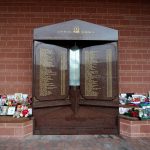School buildings in England made with a certain type of concrete that is prone to collapse will be immediately closed over safety fears, the government has announced.
Around 104 schools or “settings” will be disrupted on top of 50 that have already been affected this year.
The Department for Education (DfE) said the “vast majority of schools and colleges will be unaffected by this change” – but Labour criticised the move as “staggering display of Tory incompetence”.
The type of concrete forcing the closures is Reinforced Autoclaved Aerated Concrete, known as RAAC.
It is the same type of concrete that has been found in some hospitals that have been deemed to be unsafe, prompting Health Secretary Steve Barclay to fast-track them into the government’s hospitals-building programme.
Education Secretary Gillian Keegan said: “Nothing is more important than making sure children and staff are safe in schools and colleges, which is why we are acting on new evidence about RAAC now, ahead of the start of term.
“We must take a cautious approach because that is the right thing to do for both pupils and staff.
Pupils face disruption at start of new school term due to probe into school buildings firm Caledonian Modular
GCSE results: Top grades fall but remain above pre-pandemic levels – as number of students studying Chinese doubles
New BRIT School for performing arts to open in Bradford
“The plan we have set out will minimise the impact on pupil learning and provide schools with the right funding and support they need to put mitigations in place to deal with RAAC.”
Shapps appointment ‘so depressing’ – politics latest
Secretary of state must ‘get a grip on her department’
Labour’s shadow education secretary Bridget Phillipson said the government was “failing” children by needing to close schools just before the new term started.
“This is an absolutely staggering display of Tory incompetence as they start a fresh term by failing our children again,” she said.
Please use Chrome browser for a more accessible video player
“Dozens of England’s schools are at risk of collapse with just days before children crowd their corridors. Ministers have been content to let this chaos continue for far too long.
“It’s long past time the secretary of state got a grip on her department.”
Paul Whiteman, general secretary of school leaders’ union NAHT, also said the “news is shocking, sadly it is not hugely surprising”.
“What we are seeing here are the very real consequences of a decade of swingeing cuts to spending on school buildings,” he said.
“The government is right to put the safety of pupils and staff first – if the safety of buildings cannot be guaranteed, there is no choice but to close them so urgent building work can take place.
News reporter
Reinforced Autoclaved Aerated Concrete – handily shortened to RAAC – is essentially a lightweight form of concrete.
It was used to build roofs, schools, colleges and other buildings from the 1950s until the mid-1990s, according to GOV.UK.
In comparison to traditional concrete, RAAC is weaker. It is made in factories using fine aggregate, chemicals to create gas bubbles and heat.
Both the material properties and structural behaviour differs significantly from traditional reinforced concrete.
In 2019, the Standing Committee on Structural Safety highlighted the significant risk of failure of RAAC planks.
Three years later in 2022, the Office of Government Property sent a safety briefing notice to all property leaders, saying that “RAAC is now life-expired and liable to collapse”.
Chris Goodier, professor of construction engineering and materials at Loughborough University said: “It is RAAC from the 1950s, 60s and 70s that is of main concern, especially if it has not been adequately maintained.
“RAAC examples have been found with bearings (supports) which aren’t big enough, and RAAC with the steel reinforcement in the wrong place, both of which can have structural implications.”
“But there is no escaping the fact that the timing of this couldn’t be worse, with children due to return from the summer holidays next week.”
The DfE said the majority of the school sites would remain open for face-to-face learning and only specific parts of buildings closed where RAAC is used.
It said a minority will need to either “fully or partially relocate to alternative accommodation” while mitigations are put in place.
Some hospitals deemed ‘unsafe’ because of RAAC
The department said the government has been aware of RAAC in public sector buildings since 1994 but the issue came to light in 2018, when a roof collapsed at a Kent school.
That year the DfE published guidance for schools stating the need to have “adequate contingencies” in the event of evacuations caused by concerns over the use of RAAC.
Read more:
Pupils face disruption at start of new school term due to probe into school buildings firm Caledonian Modular
Hundreds of crumbling schools to be renovated but critics say it won’t make up for ‘years of underfunding’
In June this year, the National Audit Office (NAO) said a school collapse in England that causes death or injury was “very likely” – but that the government did not have sufficient information to manage “critical” risks to the safety of pupils and staff.
Around 24,000 school buildings – more than a third of the total number in England – are beyond their estimated design lifespan – with school leaders branding the scale of building safety issues “shocking”.
Questions were also raised about the state of UK hospitals after Mr Barclay said that five new sites would be added to the government’s programme to build 40 new hospitals because the presence of RAAC made them unsafe to operate “beyond 2030”.
Five new sites – Airedale General in Keighley, Queen Elizabeth Hospital in King’s Lynn, Hinchingbrooke near Huntingdon, Leighton Hospital in Cheshire and Frimley Park in Surrey – were added to the programme as a priority.






















